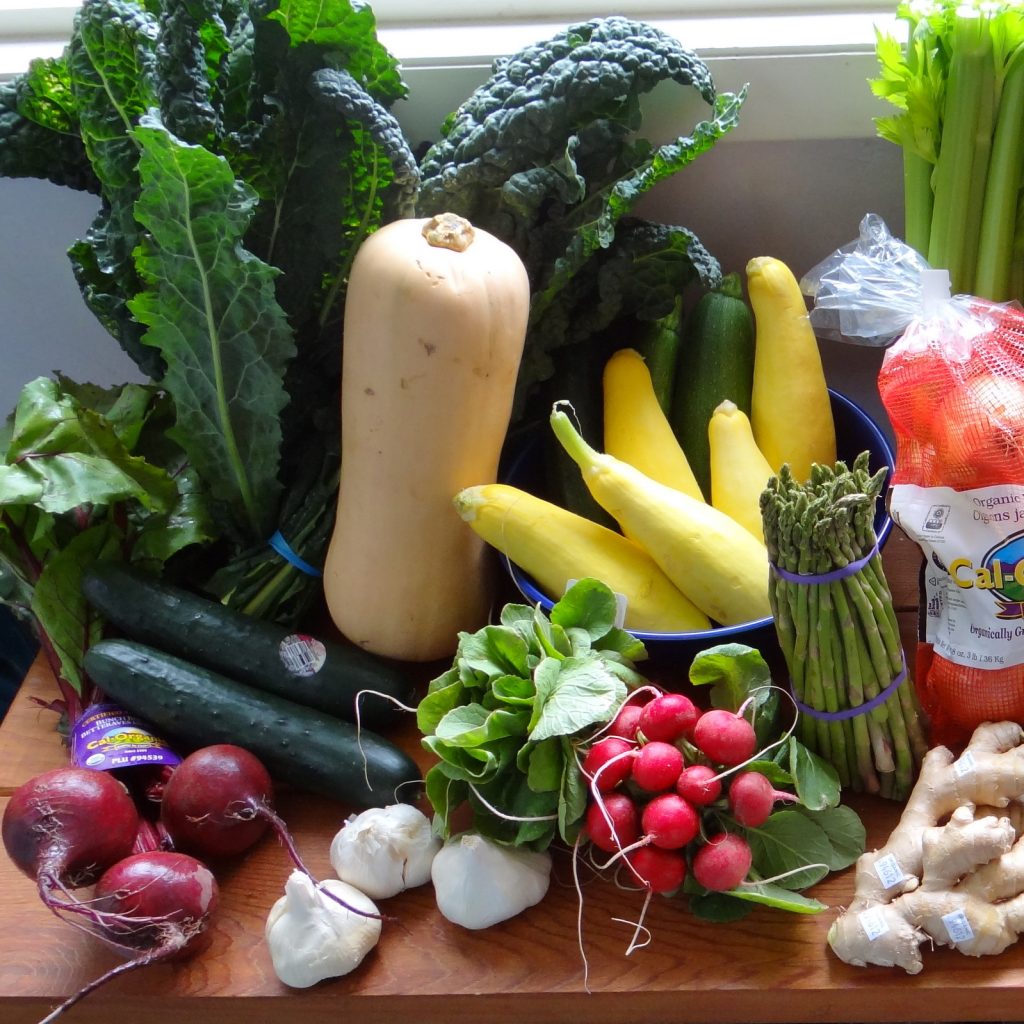
“I think our health is always shifting and we need to be ready and willing to shift with it.”
~ Caroline Stahlschmidt
The Short Answer and a Longer Answer
Can you do the AIP as a vegetarian? The short answer is no. Protein is a necessary food group, and the autoimmune protocol (AIP) eliminates most vegetarian protein sources (grains, soy, eggs, legumes, dairy, nuts and seeds). Why? Because these foods commonly irritate digestion and/or trigger autoimmune symptoms. That can be surprising to hear, because in our culture we’ve been taught that whole grains are good for us, and meat is bad for us. Unfortunately, mainstream beliefs rarely match up with the science.
If you’re asking this question and researching paleo, I’m guessing your current diet isn’t improving your autoimmune symptoms, and you’re considering alternatives. Perhaps one of your healthcare practitioners has suggested you try the AIP. I know that if you haven’t eaten meat or seafood for years, possibly decades, it can be a hard thing to consider. So, first let me share the science with you, and then I’ll share some tips for making the transition easier.
Comparing the Nutrition of a Vegetarian vs. Paleo Diet
Terry Wahls is an M.D. and the author of The Wahls Protocol. She has multiple sclerosis, and went from a wheelchair to a bicycle by switching to a nutrient-dense paleo diet. Prior to that, she had spent over 10 years as a vegetarian. Why did she make the switch? She writes about this extensively in Chapter 6 of her book. Here are some highlights:
- Meat and Seafood naturally contain all the amino acids necessary to make a complete protein. Plants don’t. That’s why vegetarians try to create complete proteins by eating grains and legumes together. This is a much less efficient process and doesn’t work as well to provide our bodies with the nutrition we need. In addition, grains and legumes contain anti-nutrients like phytates, lectins and trypsin. These make the nutrients within these foods difficult to absorb, decreasing their nutrition even further. These anti-nutrients can also irritate the gut and increase inflammation bodywide.
- Soy is a very popular “meat replacement” in the vegetarian community. As a legume, not only does it contain the same problems mentioned in the bullet point above, it has additional problems. Over 90% of soy in the United States is genetically modified, and the science of the effect of GMOs on our bodies is unclear. Soy also contains phytoestrogens, which can affect the hormone balance in our bodies. And hormone fluctuations impact autoimmune flares.
- Essential fatty acid balance is important in autoimmune healing. Our ancestors ate a 1:1 ratio of omega 6 to omega 3 fatty acids. Plants and plant oils contain the omega 6. Seafood and grass-fed meats and oils contain the omega 3. When we get too much 6 (as happens in a vegetarian diet), the response is an inflammatory response in the body. While certain seeds like flax and hemp are advertised as being high in omega 3’s, they contain the type ALA, when our bodies need EPA and DHA. Our bodies can try to convert the ALA into EPA and DHA, but it’s an inefficient process and very little gets converted.
- Bone broth is an ancestral food that is particularly healing to our intestinal lining, and there is a direct connection between “leaky gut” and autoimmune disease.
- Vegetarianism often leads to deficiency in a very important vitamin: B12. That’s because animal foods are the natural source. The symptoms of B12 deficiency can mimic autoimmune disease.
- Lastly, vegetarian diets tend to lead to low stomach acid over the long-term, and stomach acid is essential to healthy digestion. In the transition tips below, I share tips for increasing your stomach acid safely.
Baby Steps for Eating Meat After Years as a Vegetarian
Are you ready to start adding animal protein back into your diet? Here’s my best advice for making this transition as easy as possible.
- If you were a vegetarian for ethical reasons, you might be interested in The Vegetarian Myth, a book which talks about ethics from the opposite perspective. You can also make ethical choices about the meat you do eat, choosing meat from animals that were humanely raised. Get to know your local farmers and their farming practices, and shop from the best. Localharvest.org is a great resource.
- Many long-term vegans and vegetarians have depleted stomach acid, and we need stomach acid to digest our food completely. With all of the antacid commercials on TV, this can come as a surprise, too. Far more people are deficient in stomach acid than over-producing. Indigestion often results from the stomach’s inability to digest the food, and antacids simply make this problem worse. Whenever we’re trying to heal our bodies, healing our digestion is a necessary first step. Some natural ways to increase your stomach acid are: (1) Chew on a piece of ginger before eating. (2) Have a small cup of ginger tea after eating. (3) Drink a tablespoon of apple cider vinegar in a small glass of water after eating. (4) Eat a little homemade sauerkraut with your meal. (5) Have a small glass of kombucha after eating. You’ll notice I’ve said “small glass” many times. If you drink too much liquid with a meal, you can dilute your stomach acid. Limit to 4-8 ounces. (6) If these natural methods aren’t enough to improve your digestion, work with a nutritionist on HCL supplementation. It’s important to work with a professional, because HCL can be dangerous for certain health conditions, and it can be harmful if you over-supplement. However, in the right dose, for the right person, it can make a world of difference.
- Seafood is one of the easiest proteins to digest, so it’s a good first choice for transitioning vegetarians. In fact, many people still call themselves vegetarians when they eat seafood, but the official term is pescatarian. What makes this protein special? In addition to having the most bio-available amino acids, seafood is also the richest source of anti-inflammatory DHA and EPA omega 3 fatty acids. Lastly, seafood contains abundant amounts of iodine and selenium, two important minerals that are hard to find in other foods. Sarah Ballantyne, author of The Paleo Approach, recommends people eat seafood at least 3 times a week on the autoimmune protocol. For more information on the healthiest seafood choices, read my article: Does Healthy, Sustainable Seafood Exist?
- Meat is also a dense source of nutrients, and the more varied our diet, the better our nutrition. Here are some steps to slowly accustom yourself to meat’s flavor and texture. Start with homemade bone broth. When you’re comfortable with that, make a soup with meat and vegetables and blend it all together into a thick soup. When you’re comfortable with that, don’t blend it – eat the meat and vegetables in chunks. When you’re comfortable with that, move onto stews and slow-braised meats (like roasts in the slow cooker). Meat cooked slowly at low temperatures, in broth or natural juices, is easier to digest than fried or grilled meats. Those would be the last ones to reintroduce.
- Organ meat is also an important part of any healing diet. They contain between 10-100 times the nutrition of other cuts of meat. It’s a myth that they store toxins. Actually, they store the nutrients our bodies need in order to detoxify. If you’re up for adding these into your diet right away, do so. Your body will thank you. Chicken livers are a good gateway organ meat. They’re mild in flavor and relatively easy to find. Try my recipe for Chicken Liver Fried “Rice”.
- One last thing to know: Paleo isn’t a meat-only diet. It’s a diet focused on nutrient diversity and density, and that means plenty of vegetables. Terry Wahls recommends people eat 6-9 cups of vegetables daily (measured before cooking), and Sarah Ballantyne recommends even more: 8-14 cups. This is often more than vegetarians eat daily, hence the popular paleo hashtag #morevegetablesthanavegetarian. So, if you’re a vegetable lover, you’ve found a tribe of kindred spirits.
- You may find that you’re able to make the transition quickly, or it may take you many months of baby steps to become comfortable with this new style of eating. Keep your health your focus, and take whatever time you need. Many people start to feel their health and energy levels improve dramatically with this change. That’s my wish for you.
You May Also Be Interested In
A version of this post originally appeared in my column in Paleo Magazine.

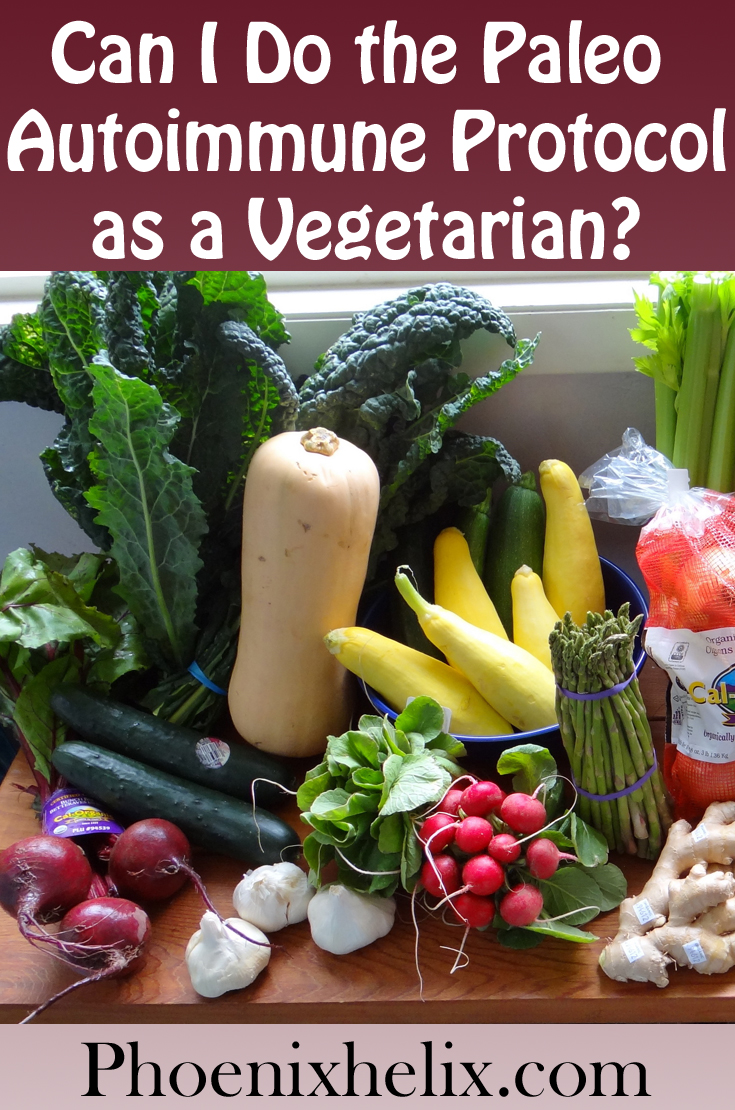
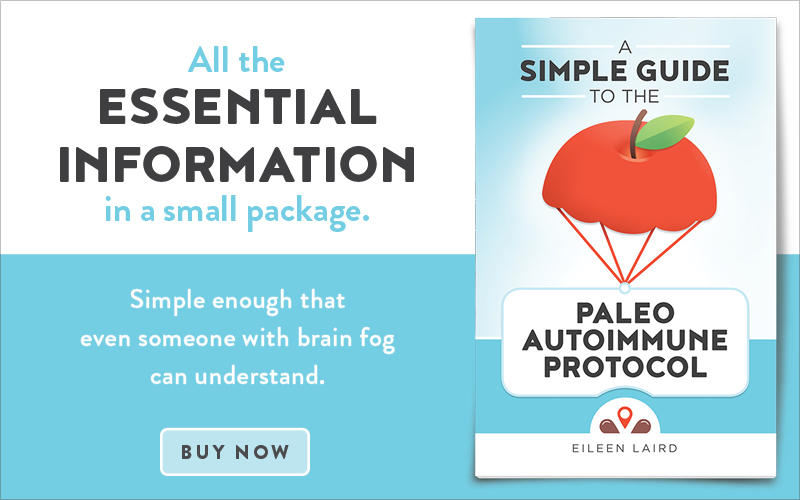



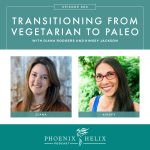
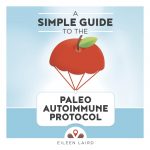

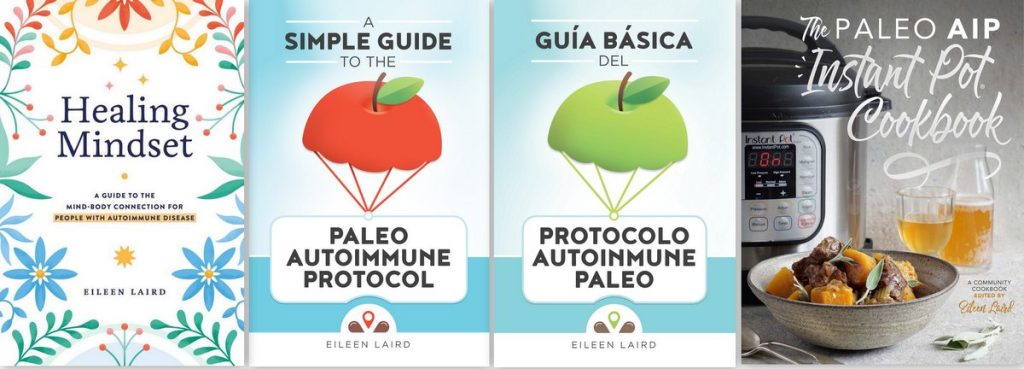
Thank you so much!
I am vegetarian for religious reasons. Meat is forbidden for us. I would like to take on your suggestions but is there anything I can substitute for meat and be able to take positive strides towards my wellbeing
Hi Jeya. Are you allowed seafood? If yes, you can definitely due the AIP as a pescatarian. If you aren’t allowed seafood either, I recommend reading the book, The Wahls Protocol. There is a chapter that teaches how to maximize nutrient-density and minimize inflammation as a vegetarian.
Those of us who are on very low income cannot eat the way they prescribe. Or I should say, can’t afford to. I eat vegetables, but very limited, as with everything else. I eat pretty basic veges and fruits, and I can only do my best. Food costs keep going up and up, and so many of us live month to month already going without so much. I wish someone would put out a very simple, wholesome, vegetarian diet for autoimmune disease, for low income. 😉 Good article, thank you for posting this.
Roberta, while I cannot fulfill that wish, I recommend listening to Podcast Episode 78. We talk about many things, including how to do the AIP on a budget.
Any recommendations for transitioning into the AIP diet when I am allergic to shellfish and since I’ve had some surgeries, do not digest meat well. Is it really impossible to do this diet without eating any meat. I may be able to tolerate a small amount of certain types of fish but not daily.
Thank you for your time.
Hi Sandy. My recommendation is to work with a qualified dietitian to help you heal the digestive issues that make meat digestion difficult. Once you are able to digest meat again, then the AIP will be much easier for you. I highly respect Amy Kubal, RD. You can listen to Episode 46 of my podcast, as an introduction to her background and personality. Then, if you’d like to work with her professionally, you can set up a consultation through The Paleo Mom Consulting.
Is it possible to do the auto immune diet with out eating organ meat? The thought absolutely turns my stomach.
Michelle, you can pace yourself. Many people take time to warm up to the idea of eating organ meat. According to Sarah Ballantyne, shellfish are an excellent alternative. Mussels, oysters, and clams are the most nutrient-dense in that category, but all shellfish are great choices.
Hello Eileen. I was wondering if spirulina, nutritional yeast and organic pea protein, could also be part of this way of eating.Each day, I have one teaspoon of spirulina, and my protein powder of choice is Organic Pea Protein. I also occasionally use nutritional yeast, when I “need” that cheese flavour.
Thank you for helping me out with this question.
Hi Monique. Nutritional Yeast is fine, but make sure it’s 100% natural (unfortified). It will still have natural B vitamins but won’t have the chemical versions added that many people have difficulty processing. The other items you mentioned aren’t AIP. Spirulina stimulates the immune system so is best avoided. Peas are legumes and not allowed on the protocol. While you can have smoothies on the AIP, we recommend you transition to eating your food, because that’s better for digestion and blood sugar stability. If you absolutely want a protein powder on the AIP, here’s a new one that was just released and created by Dr. Sarah Ballantyne: Vital Proteins Veggie Collagen Blend.
Jon Maddison on Youtube documented his healing of full body psoriasis (an autoimmune disease) on a completely vegan diet. It took 7 months. Hisdiet is very similar to the A.I.P except no animal products whatsoever. It’s possible!
Hi Cassie. If indeed Jon is combining veganism with the AIP, I’d be more interested in seeing his health and his diet 5 years later. You’ll see similar dramatic stories from people who go on a juice fast, but you can’t maintain either of these things long-term without serious nutrient deficiencies developing over time. We need diets that feed us for life, rather than temporary bandaids. I’m not saying that some people don’t do well on a regular vegan diet. I’m saying that you can’t combine the AIP with veganism without hurting your body long-term. And if someone has tried veganism and isn’t getting better, the AIP (including either seafood or meat) is worth a try.
Thank you so much for putting this post together, Eileen. I get this question ALL the time. It’s brilliant to know that I can refer people here!
Hi,
My name is Michelle Lopez I just purchased your 85 Amazing AIP Breakfast Cookbook, but I could not get the download to populate. And it wants me to pay for it again. I tried to print the receipt, but the paper only printed some paypal information without the order number. I will check my email to see if it came through. Can you please help? I am very interested in this book.
Hi Michelle. I’m sorry you had technical difficulties. I just sent you an email with the breakfast cookbook attached. If it’s not in your regular inbox, check your spam folder. And enjoy the book!